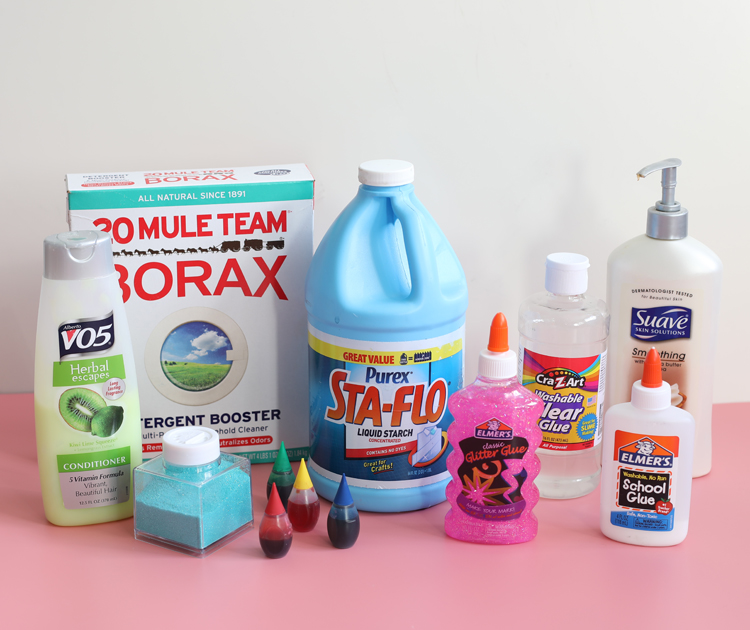Unveiling Borax: What's Inside This Common Household Item

What exactly is borax, and what is it made of? This seemingly simple question leads us down a fascinating path into the world of chemistry and mineralogy. Borax, a naturally occurring mineral, is a common household item used for cleaning, laundry, and even pest control. But understanding its composition is key to using it safely and effectively.
Borax, also known as sodium borate, sodium tetraborate, or disodium tetraborate, is a boron-containing compound. Its chemical formula is Na₂[B₄O₅(OH)₄]·8H₂O. This tells us that borax is composed of sodium (Na), boron (B), oxygen (O), and hydrogen (H). The "8H₂O" indicates that there are eight water molecules attached to each molecule of borax. This hydrated form is the most common form found in nature and used in household products.
Historically, borax has been used for centuries. Its origins can be traced back to ancient Tibet, where it was mined from dry lakebeds. From there, it made its way along trade routes to the Middle East and eventually Europe. It gained popularity as a cleaning agent and flux for metalworking.
The importance of understanding the borax composition stems from safety concerns. While generally considered safe for many uses, it’s important to be aware of potential risks. Borax is not meant for internal consumption and should be kept away from children and pets. Knowing its chemical makeup allows us to understand how it interacts with other substances and take appropriate precautions.
Furthermore, understanding the chemical composition of borax helps us appreciate its versatility. The unique arrangement of atoms within the borax molecule contributes to its cleaning power, its ability to soften water, and its effectiveness as a pesticide.
One benefit of borax is its ability to act as a natural cleaning agent. The boron in borax helps to break down dirt and grime, making it an effective cleaner for a variety of surfaces.
Another benefit is its use as a laundry booster. Borax helps to soften hard water and boost the effectiveness of detergents.
A third benefit is its use as a natural pesticide. Borax can be used to control ants, roaches, and other common household pests.
Advantages and Disadvantages of Borax
| Advantages | Disadvantages |
|---|---|
| Effective cleaning agent | Can be irritating to skin and eyes |
| Laundry booster | Toxic if ingested in large quantities |
| Natural pesticide | Not environmentally friendly in large concentrations |
Five best practices for using borax:
1. Always wear gloves when handling borax.
2. Avoid inhaling borax dust.
3. Keep borax out of reach of children and pets.
4. Follow product label instructions carefully.
5. Store borax in a cool, dry place.
Frequently Asked Questions About Borax:
1. What is borax? Borax is a naturally occurring mineral.
2. What are the ingredients in borax? Borax is composed of sodium, boron, oxygen, and hydrogen.
3. Is borax safe? Borax is generally considered safe for many uses, but precautions should be taken.
4. What are the uses of borax? Borax can be used for cleaning, laundry, and pest control.
5. How should I store borax? Store borax in a cool, dry place, out of reach of children and pets.
6. Can borax be used for pest control? Yes, borax can be used to control ants, roaches, and other common household pests.
7. Is borax harmful to the environment? Borax can be harmful in large concentrations; responsible use is essential.
8. Where can I buy borax? Borax is readily available in most supermarkets and online retailers.
Tips and tricks for using borax: Mix borax with sugar to create an ant bait. Dissolve borax in water to create a cleaning solution.
In conclusion, understanding what constitutes borax is crucial for leveraging its benefits responsibly. Its chemical composition, Na₂[B₄O₅(OH)₄]·8H₂O, dictates its versatility as a cleaning agent, laundry booster, and even a natural pesticide. While generally safe, awareness of potential hazards and adherence to safety guidelines are paramount. By exploring the origins and applications of this fascinating mineral, we can harness its power while mitigating risks. Knowing the ingredients in borax allows us to make informed decisions about its use and appreciate its role in our homes and various industries. Continue to explore the fascinating world of chemistry and discover the hidden potential of everyday substances like borax. By understanding the composition and properties of borax, we can use it safely and effectively to enhance our cleaning routines and maintain a healthy home environment. Remember to always prioritize safety and follow recommended guidelines when using borax or any other household chemical.
Flowing breeze behr paint a serene hue for your home
Anime youtube channel art level up your channel
Finding peace in rolling fork glenwood funeral home records













